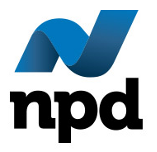The Window for Pay-TV Operators to Control the Video-On-Demand Movie Rental Market is Still Open, But For How Long?
Thursday, February 16th, 2012
Internet video-on-demand (iVOD) users’ viewing of TV shows, news, and sports on pay television dropped 12 percent in the 12 months ending August 2011
PORT WASHINGTON, NEW YORK — According to The NPD Group, a leading market research company, the current video-on-demand (VOD) market for paid movie rentals is ruled by pay-TV services, with revenues that reached $1.3 billion last year. The emerging Internet video-on-demand (iVOD) movie market reached $204 million and is growing quickly, which may already be leading to consumers reducing their use of pay-TV VOD a-la-carte movie services. In fact, there were 4 million fewer pay-TV VOD users who paid additional fees to watch movies in August of 2011 compared to August 2010.
According to information from NPD’s VideoWatch VOD tracking service, 15 percent of U.S. consumers ages 13 and older used pay-TV VOD movie services from a cable, satellite, or fiber-optic provider in the twelve months ending August 2011, which translates to 40 million users. By contrast the iVOD channel, which includes movie offerings from iTunes, Amazon, Vudu, and others, has already reached seven million users. One out of every six (16 percent) paid VOD movie-rental transactions were attributed to iVOD in 2011.
“With consumers being exposed to more paid on-demand viewing options, pay-TV operators still have a window of opportunity to take advantage of their relationship with customers,” said Russ Crupnick, senior vice president, industry analysis for The NPD Group. “The home TV is by far the leading way consumers pay for movies via VOD and pay-TV companies currently control both the billing relationships and the remote controls associated with those TVs.”
“The challenge for pay-TV operators is that there is significant overlap between iVOD and pay-TV VOD movie usage,” Crupnick said. “This overlap is expected to expand — possibly cutting deeply into pay-TV VOD movie revenues — as growth in consumers’ use of Apple’s iTunes, Vudu, and other services expands to new connected devices in the home, and as iVOD interfaces become easier to use.”
“iVOD users reduced their time spent watching TV shows, news and sports via pay-TV companies by 12 percent between August 2010 and August 2011; so pay-TV operators now must not only defend their movie VOD revenues, but also counter an emerging threat to the basic programming served to consumers,” according to Crupnick.
According to NPD, users perceive watching iVOD movies to be a better value, than watching movies on pay-TV VOD. Users also have a more favorable perception of iVOD, when it comes to available movie-title selections.
“iVOD distributors are effectively using CRM, free trials, and other promotions to gain trial usage of their services by new customers,” Crupnick said. “With this new competition eating away at revenues, pay-TV operators need to be equally aggressive with promotions, in order to instill a habit of movie buying among their subscribers.”
Information in this press release is based on NPD’s VideoWatch VOD tracking service, which reports on a-la-carte paid movie rentals only. This data does not include free or paid viewings of television shows or series; nor does it include Netflix Streaming movie subscriptions or free movies from pay-TV providers that are included in their subscriptions. All findings are based on information compiled from more than 22,000 members of NPD’s online consumer panel. All data has been weighted and projected to reflect the U.S. population (age 13 and older).
Latest News
- Movistar Plus+ to create real-time short-form sports video with WSC Sports
- SeaChange to instead be acquired by Enghouse
- Rogers to bring Comcast and Xfinity products to Canada
- OTTera partners with ThinkAnalytics on enhanced personalization
- Televisa selects Synamedia edge gateway and distribution platform
- X Corp confirms intention to launch app for Smart TVs